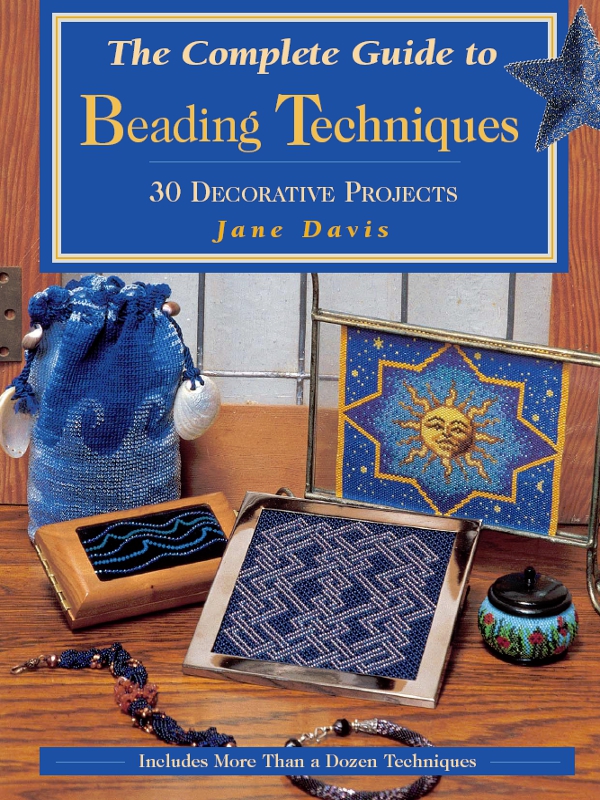 The Complete Guide to
The Complete Guide to
B eading T echniques 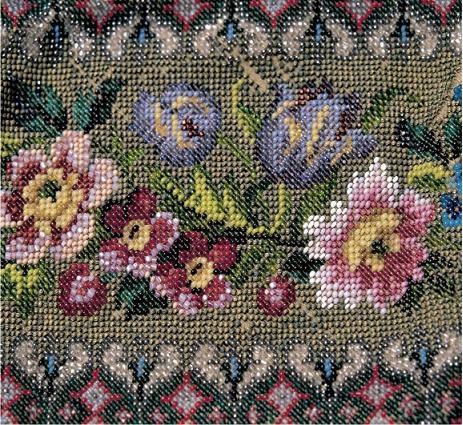 Photo by Myra Nunley Jane Davis 2001 by Jane Davis
Photo by Myra Nunley Jane Davis 2001 by Jane Davis
All rights reserved. No portion of this publication may be reproduced or transmitted in any form or by any means, electronic or mechanical, including photocopy, recording, or any information storage and retrieval system, without permission in writing from the publisher, except by a reviewer who may quote brief passages in a critical article or review to be printed in a magazine or newspaper, or electronically transmitted on radio or television. Published by  Please call or write for our free catalog of publications. Our toll-free number to place an order or obtain a free catalog is 800-258-0929 or please use our regular business telephone 715-445-2214 for editorial comment and further information. Library of Congress Catalog Number 00-110072
Please call or write for our free catalog of publications. Our toll-free number to place an order or obtain a free catalog is 800-258-0929 or please use our regular business telephone 715-445-2214 for editorial comment and further information. Library of Congress Catalog Number 00-110072
ISBN 0-87341-967-7
e-ISBN: 978-1-4402-1972-6 Unless otherwise noted, all photography by Ken Keyes.
All illustrations by Jane Davis. Dedication I dedicate this work to my mother, Marit Allgood Powell, who has always encouraged my many artistic endeavors since childhood.
Thank you Mom. I love you. Acknowledgments T hank you and many warm thoughts to Sylvia Sur for pre-editing my text, especially for setting up the beginning organization of the patterns, the technical re-write of Chapters 5, 7, and 8, and the thread chart and information on beads in T Chapter 1. This book would have fallen far short of its title without you. Thank you to Ken Keyes Photography for the great photos that make this book a cut above. Thank you to Carole Tripp of Creative Castle for the use of your store, your answers to all of my beading questions, moral support, and mostly for our wonderful friendship.
Thank you to Roger Tripp for dragging the slide projector out of your closet so I could preview the slides, and for carting miscellaneous beading items to your office so I could pick them up. Thank you to Amy Tincher-Durik for your patience and understanding and your wonderful work on this book. Thank you to all of the bead artists who have lent me their beautiful beadwork to photograph or sent me slides to include in this book. Your work beautifies these pages. Thank you most of all to Rich, Jeff, Andrew, and Jonathan, who at times were strained but still supported my efforts, when this book spread throughout the house and put activities on hold so I could get it done and do it well. 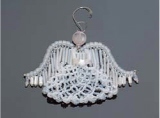
In memory of Lynn Langford.
Life is short, so make the most of it, and spread as much kindness as you can along the way. Photo of beaded angel used with permission from Art of Seed Beading, by Elizabeth Gourley, Jane Davis, and Ellen Talbott, Sterling Publishing, N.Y., N.Y., 1999. Table of Contents
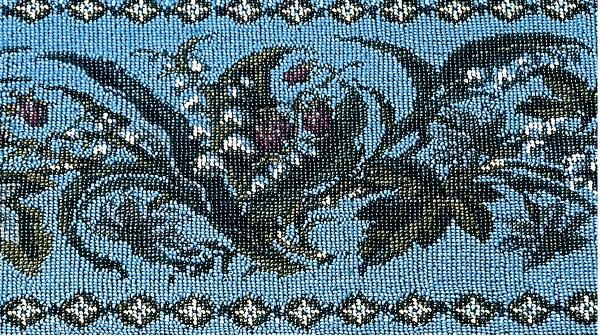 Detail of the antique serving tray on .
Detail of the antique serving tray on .
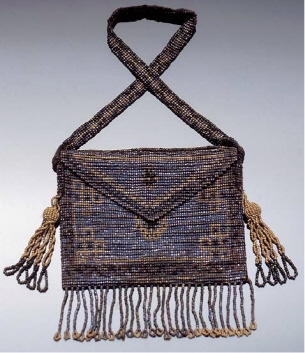 This antique steel-cut bag from France still shows the blue coating on the metal-faceted beads, although much of it has rusted or begun to flake away.
This antique steel-cut bag from France still shows the blue coating on the metal-faceted beads, although much of it has rusted or begun to flake away. 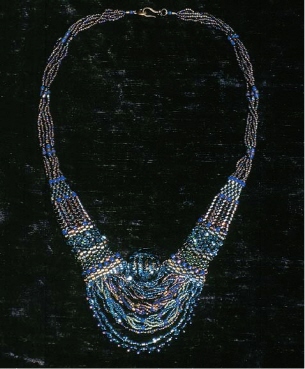 Ocean Waves, designed and stitched by Jane Davis. The use of various beading stitches adds texture to this piece. Introduction I was drawn to beadwork after seeing some amulet bags created by my friend Elizabeth Gourley and pulling out a treasured some day I want to do this article from 1986 on bead knitting by Alice Korach (the current editor of Bead & Button Magazine).
Ocean Waves, designed and stitched by Jane Davis. The use of various beading stitches adds texture to this piece. Introduction I was drawn to beadwork after seeing some amulet bags created by my friend Elizabeth Gourley and pulling out a treasured some day I want to do this article from 1986 on bead knitting by Alice Korach (the current editor of Bead & Button Magazine).
Bead knitting was my first interest, and I searched out bead stores, magazine articles, and anything I could find to learn more. From there I progressed to peyote stitch and brick stitch. The first class I taught was the brick stitch Ladybug Box on . I was extremely nervous at that first class, being very uncomfortable on stage. But, my students were very gracious, and Im still beading and teaching classes at Creative Castle in Newbury Park, California. During the same time period I entered a bead contest, and was amazed when my piece, Ocean Artisan, tied for the third place award.
I was even more surprised when it was chosen for the cover of the companion book, The Sea. Since then, Liz Gourley, her twin sister Ellen Talbott, and I wrote Art of Seed Beading, and I have self-published three other beading books. I love all fine arts and crafts and find that my art background always helps with composition and color decisions. This book is a result of my desire to try every possible handwork technique using beads. I have tried to make it as comprehensive as I could, all the time knowing it would be impossible to corral the ever-growing and ever-changing world of beads into one book. It is also my personal view of beading, which is a vast and varied creative field, with many different ways of doing the same thing.
Because of this, I think of this book more as a sampling of beadwork, and so I have explained most techniques using a small sample first. A complete and creative project follows each how-to section. Several of the techniques, such as knitting, crochet, and tatting, assume the reader already has a skilled knowledge of the process, and so those sections do not cover the basics of that technique, but only how to use it incorporating beads. The final project, in Chapter 19, is a composite sampler using many of the techniques from the book. Throughout the book you will also find photos of beautiful antique beadwork and inspiring work of contemporary artists.  How to Use This Book I wrote this book as both a reference and a project book.
How to Use This Book I wrote this book as both a reference and a project book.  How to Use This Book I wrote this book as both a reference and a project book.
How to Use This Book I wrote this book as both a reference and a project book.
Before beginning a project in an unfamiliar technique, look over Chapter 1, The Basics, and then familiarize yourself with the new technique by making the learning sample that is provided before each project. For each sample, feel free to choose the color of beads and thread of your liking, unless otherwise noted. You can use these samples for small decorative projects like the ones shown here, or in Chapter 19, The Sampler, you can combine the learning samples into a sampler wall hanging. 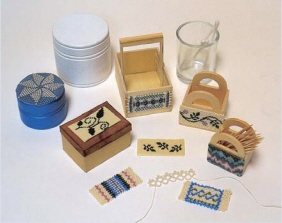 The learning samples throughout the book can be used for a variety of small projects.
The learning samples throughout the book can be used for a variety of small projects.
Chapter 1 The Basics T his chapter describes and illustrates the basic tools required for beadwork. Special tools such as bead looms are illustrated at the beginning of the chapters in which you learn how to use them with beads.
Next page

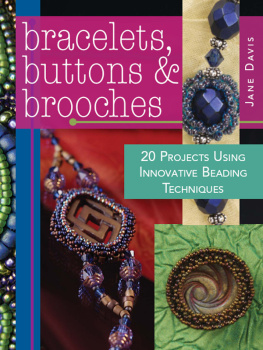
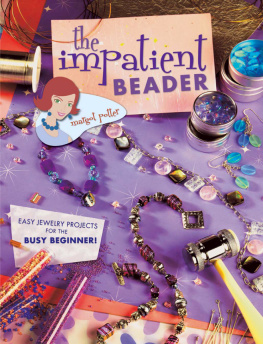
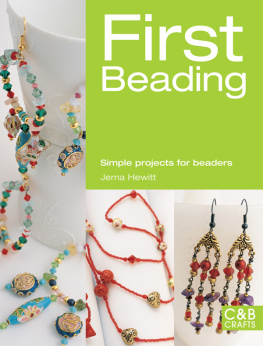
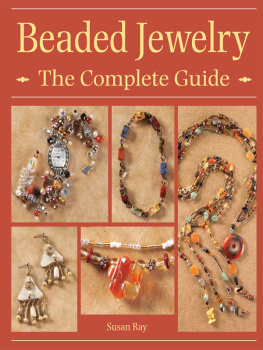
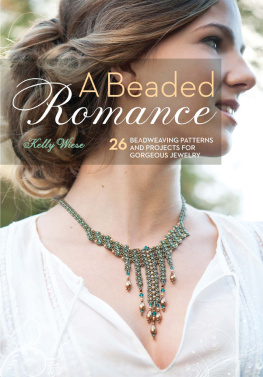
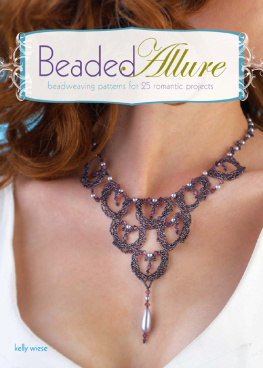
![Danielson Ethan - The beaders bible: [a comprehensive guide to beading techniques]](/uploads/posts/book/197332/thumbs/danielson-ethan-the-beader-s-bible-a.jpg)
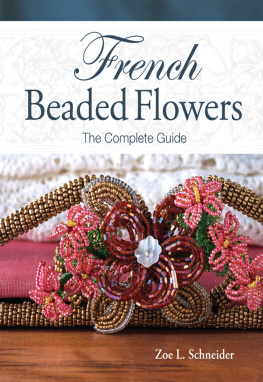
 The Complete Guide to
The Complete Guide to Photo by Myra Nunley Jane Davis 2001 by Jane Davis
Photo by Myra Nunley Jane Davis 2001 by Jane Davis Please call or write for our free catalog of publications. Our toll-free number to place an order or obtain a free catalog is 800-258-0929 or please use our regular business telephone 715-445-2214 for editorial comment and further information. Library of Congress Catalog Number 00-110072
Please call or write for our free catalog of publications. Our toll-free number to place an order or obtain a free catalog is 800-258-0929 or please use our regular business telephone 715-445-2214 for editorial comment and further information. Library of Congress Catalog Number 00-110072
 Detail of the antique serving tray on .
Detail of the antique serving tray on . This antique steel-cut bag from France still shows the blue coating on the metal-faceted beads, although much of it has rusted or begun to flake away.
This antique steel-cut bag from France still shows the blue coating on the metal-faceted beads, although much of it has rusted or begun to flake away.  Ocean Waves, designed and stitched by Jane Davis. The use of various beading stitches adds texture to this piece. Introduction I was drawn to beadwork after seeing some amulet bags created by my friend Elizabeth Gourley and pulling out a treasured some day I want to do this article from 1986 on bead knitting by Alice Korach (the current editor of Bead & Button Magazine).
Ocean Waves, designed and stitched by Jane Davis. The use of various beading stitches adds texture to this piece. Introduction I was drawn to beadwork after seeing some amulet bags created by my friend Elizabeth Gourley and pulling out a treasured some day I want to do this article from 1986 on bead knitting by Alice Korach (the current editor of Bead & Button Magazine). How to Use This Book I wrote this book as both a reference and a project book.
How to Use This Book I wrote this book as both a reference and a project book.  The learning samples throughout the book can be used for a variety of small projects.
The learning samples throughout the book can be used for a variety of small projects.